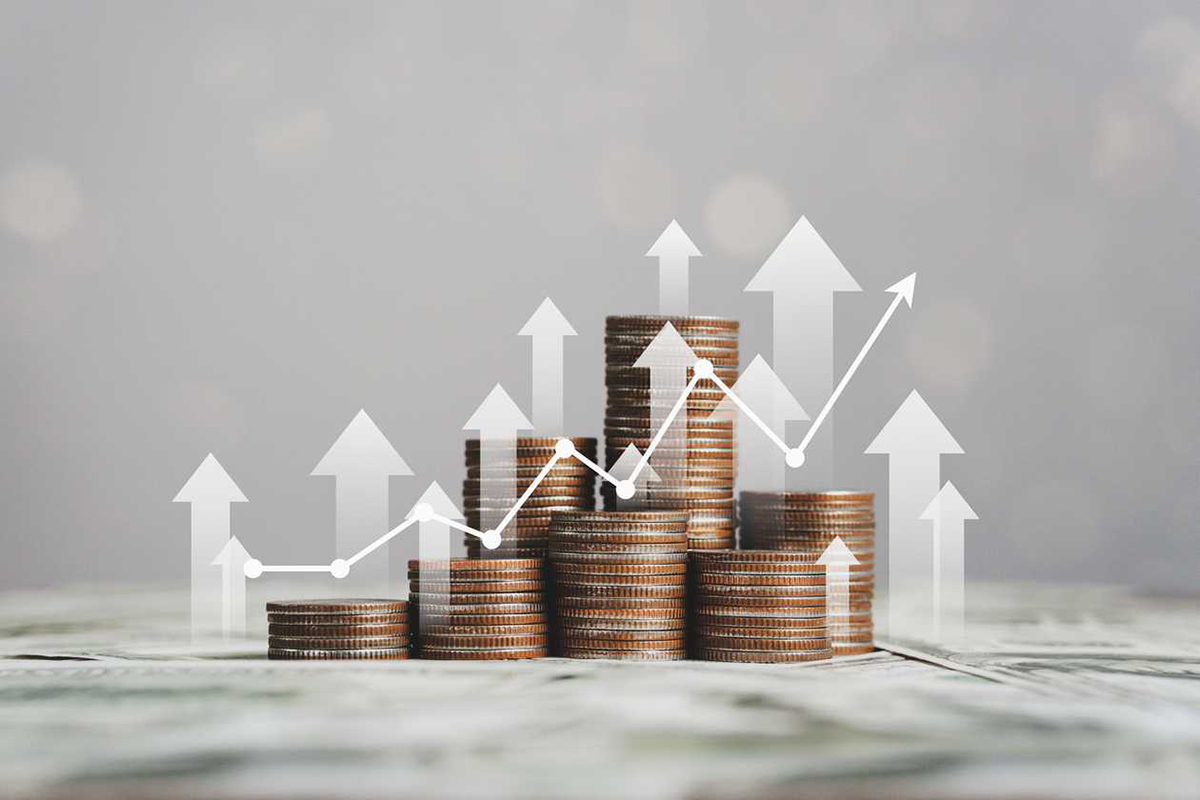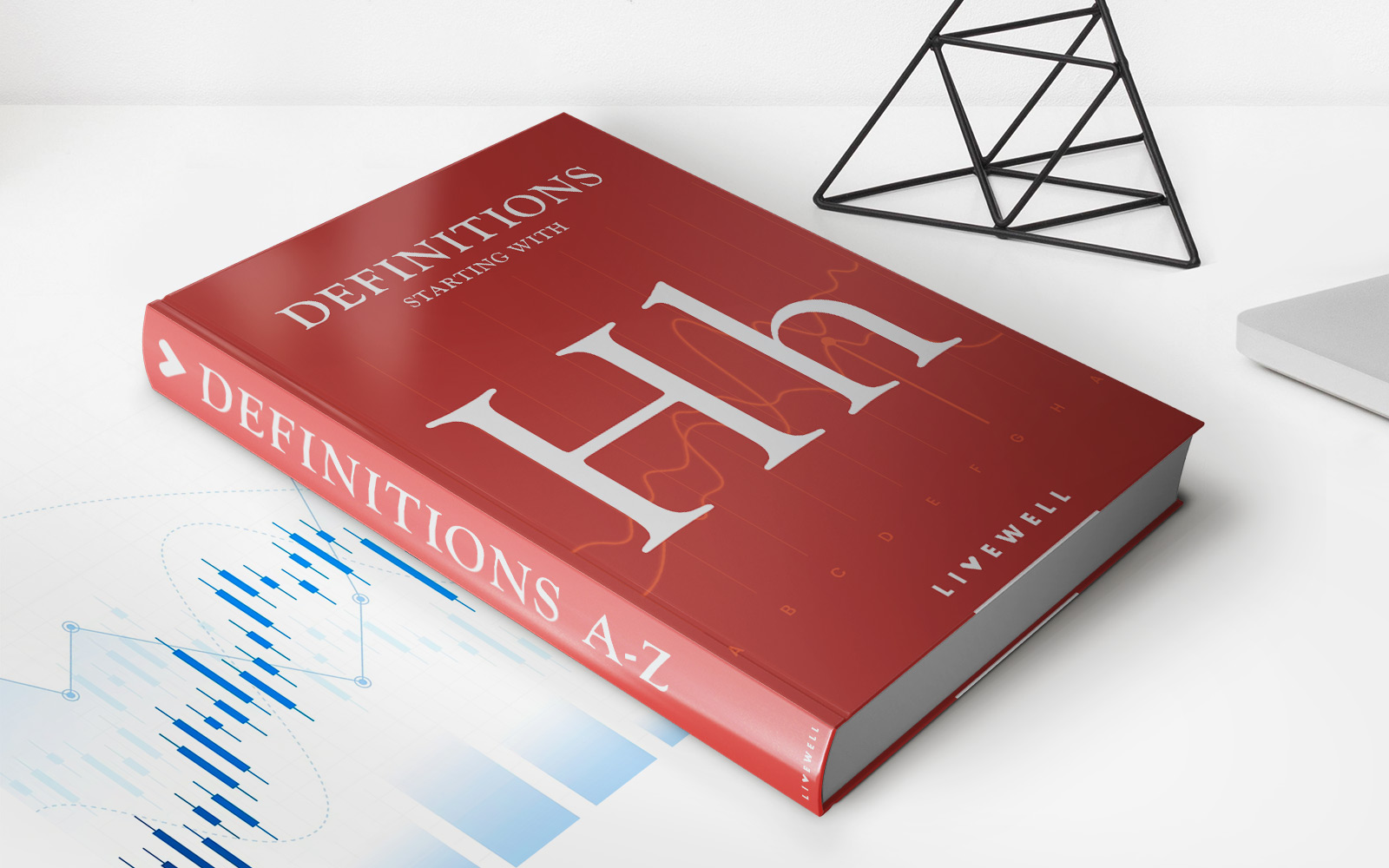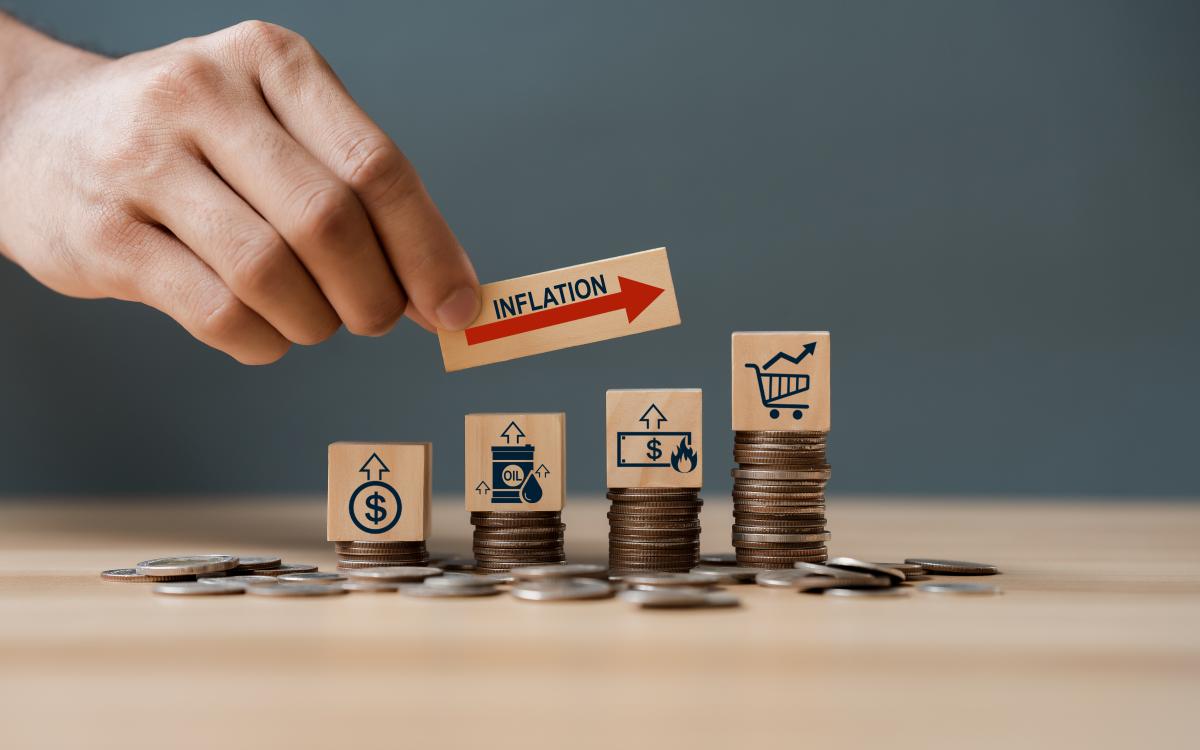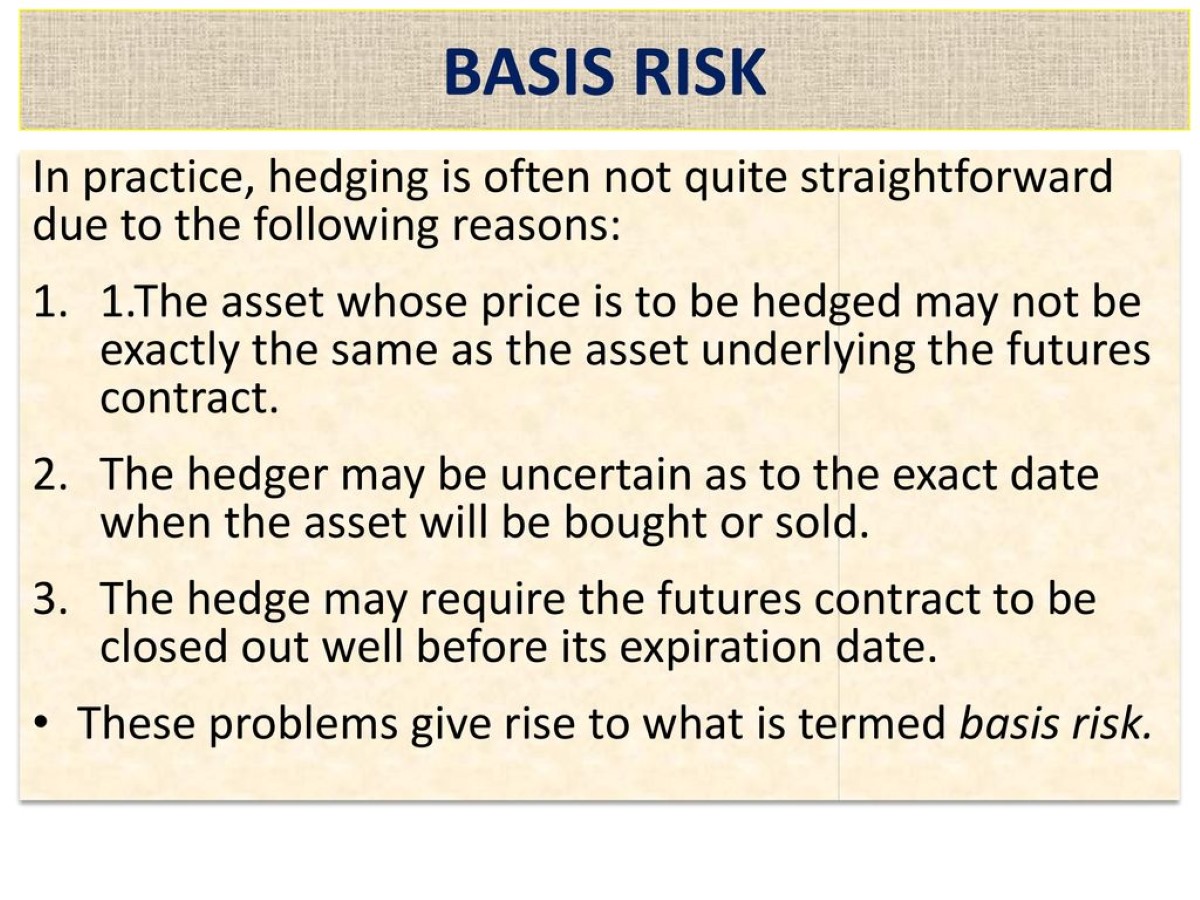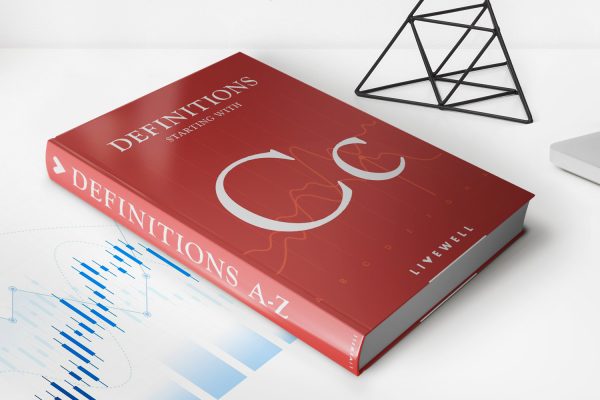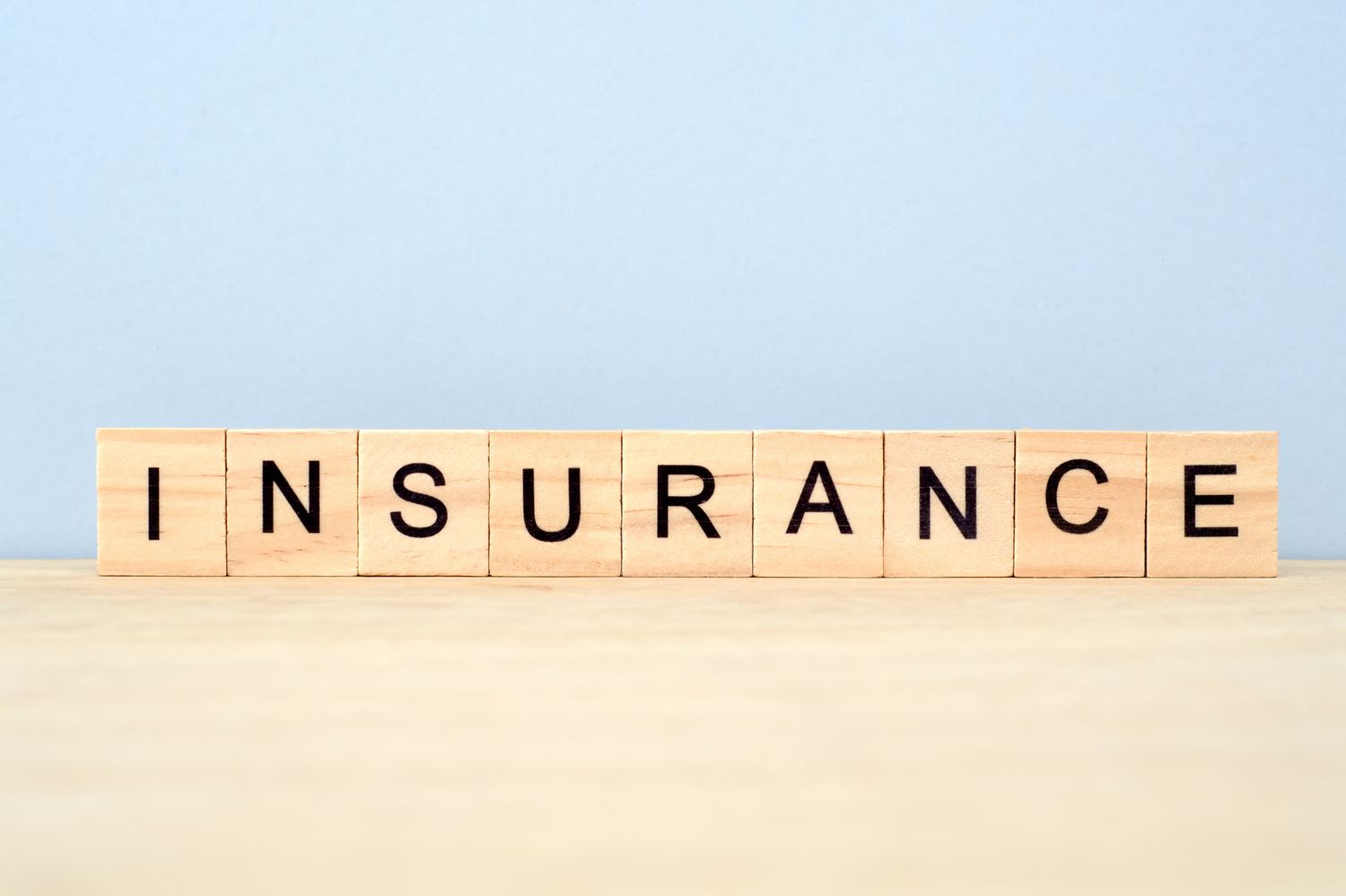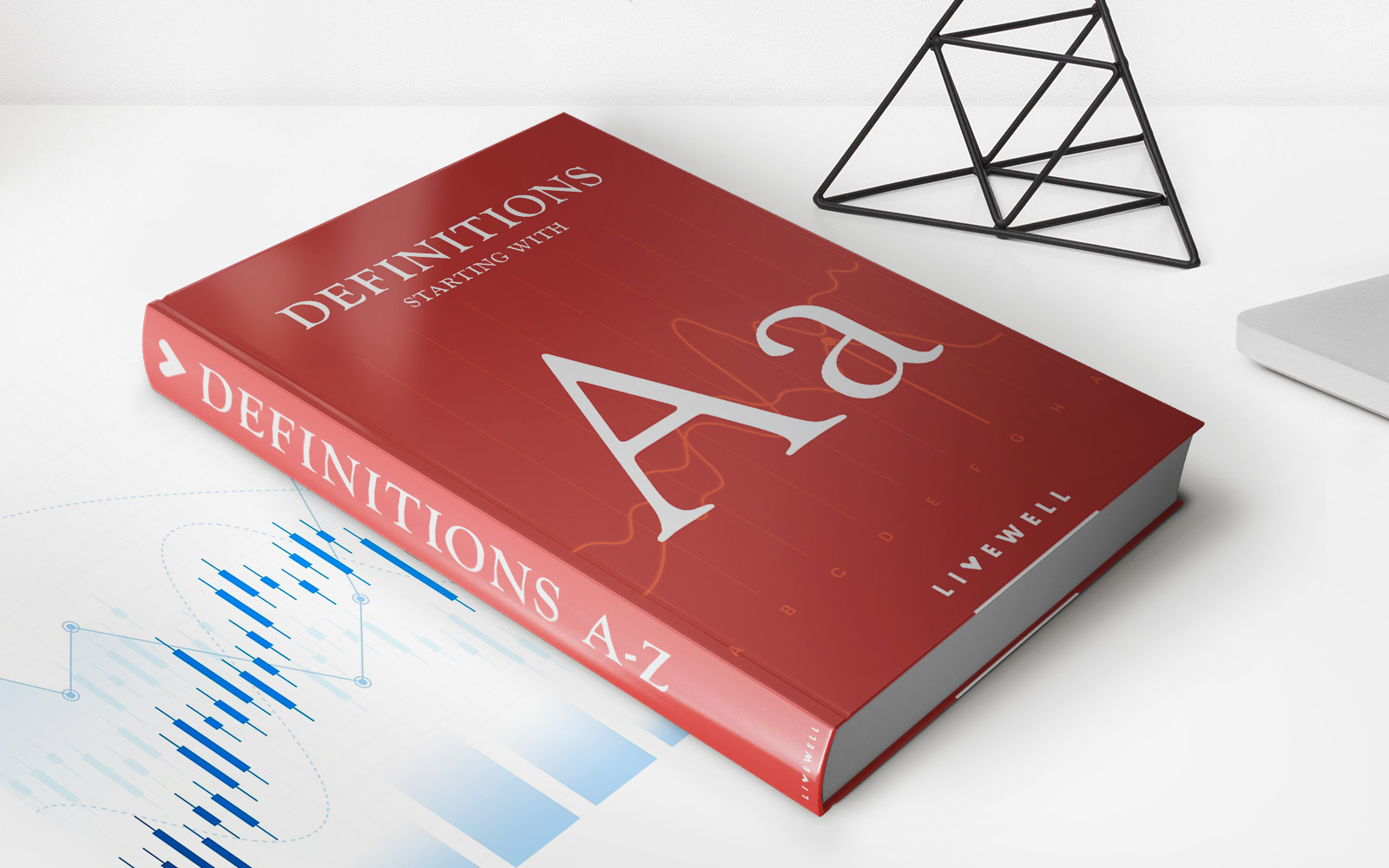Home>Finance>Why Are Collectibles Considered A High-Risk Investment?
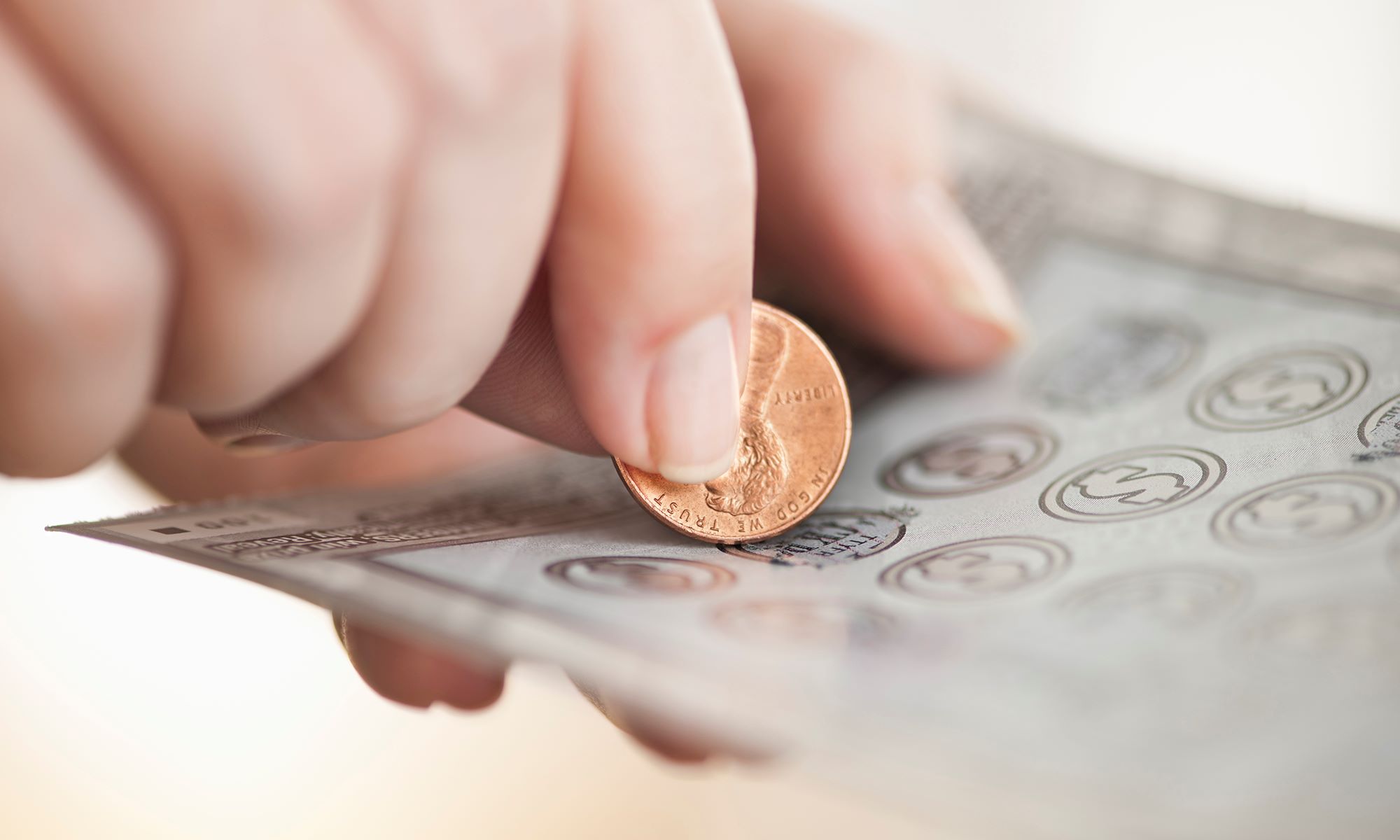

Finance
Why Are Collectibles Considered A High-Risk Investment?
Published: October 19, 2023
Discover why collectibles are considered a high-risk investment in the finance world and make informed decisions for your financial future.
(Many of the links in this article redirect to a specific reviewed product. Your purchase of these products through affiliate links helps to generate commission for LiveWell, at no extra cost. Learn more)
Table of Contents
Introduction
Collectibles, such as rare coins, stamps, artwork, and sports memorabilia, have always held a certain allure for investors. The idea of owning something unique and valuable, with the potential for substantial returns, is undeniably appealing. However, it is important to recognize that while collectibles can be profitable investments, they also come with inherent risks that investors need to be aware of.
Unlike traditional investments like stocks or bonds, collectibles are often not backed by financial performance or underlying assets. Their value is based on factors such as scarcity, historical significance, demand, and condition. This makes them subject to a higher level of uncertainty and volatility, meaning that their value can fluctuate dramatically over time.
In this article, we will delve into the reasons why collectibles are considered high-risk investments. We will explore the lack of liquidity, the volatility of prices, the difficulty in valuation, the risks of authenticity and counterfeiting, the potential for market manipulation, the influence of rarity and market demand, the lack of regulation, and the vulnerability to natural disasters and damage.
By understanding these factors, investors can make more informed decisions when considering collectibles as part of their investment portfolio. While the allure of owning rare and valuable items can be tempting, it is crucial to approach these investments with caution and a thorough understanding of the risks involved.
Definition of Collectibles
Before we delve into why collectibles are considered high-risk investments, it is important to first understand what exactly constitutes a collectible. Collectibles are unique and often rare items that are highly sought after by collectors due to their intrinsic value or historical significance. They can include a wide range of items, such as art, antiques, coins, stamps, sports memorabilia, wine, comic books, and more.
Unlike traditional investments like stocks or bonds, collectibles do not generate income or dividends. Instead, their value is primarily derived from their scarcity and desirability among collectors. The value of a collectible item is determined by various factors, including its condition, rarity, provenance, and market demand.
One key aspect of collectibles is that their value is often subjective and can be influenced by changing market trends and fads. For example, a particular artist’s work may be highly valued one year but lose popularity the next, resulting in a decline in its market value. Collectibles can also be influenced by factors such as cultural shifts, historical events, and evolving tastes.
Another defining characteristic of collectibles is their physical nature. Unlike digital assets or financial instruments that can be easily stored or traded electronically, collectibles are tangible objects that require careful handling and preservation to retain their value. This physicality also introduces additional risks, such as the potential for damage, theft, or loss.
It is important to note that while collectibles can be a passion for many collectors, they should also be approached as investment opportunities with caution. The high-risk nature of collectibles stems from several factors, which we will explore in the following sections.
Factors Contributing to High-Risk Nature of Collectibles
Investing in collectibles comes with inherent risks that set them apart from more traditional forms of investments. Let’s explore some of the key factors that contribute to the high-risk nature of collectibles.
Lack of Liquidity:
One of the primary risks associated with collectibles is the lack of liquidity. Unlike stocks or bonds that can be easily bought or sold in the financial markets, the market for collectibles is often more niche and illiquid. Finding a buyer or seller for a specific collectible can be challenging, especially for items that are rare or have a limited market demand. This lack of liquidity can lead to difficulties in quickly converting a collectible into cash when needed or selling it at a fair market price.
Volatility of Prices:
Collectibles are notorious for their volatile prices. The value of a collectible item can fluctuate greatly over time due to various factors, such as changes in market demand, economic conditions, and shifting collector preferences. Price volatility can make it difficult to accurately predict the future value of a collectible, leading to potential losses if the market value declines. Investors need to be prepared for significant price fluctuations and understand the risks involved.
Difficulty in Valuation:
Determining the true value of a collectible can be a complex task. Unlike financial instruments that have standardized valuation methods, collectibles often rely on subjective assessments by experts. Factors such as the item’s condition, provenance, rarity, and historical significance can all influence its value. Without proper knowledge and expertise, investors may struggle to accurately assess the worth of a collectible, potentially leading to overpayment or underestimation of its value.
Authenticity and Counterfeit Risks:
The world of collectibles is plagued by the risks of counterfeit items. Forgeries and counterfeit collectibles can be incredibly convincing, making it difficult for even experienced collectors to detect them. Investing in a counterfeit item can result in a total loss of investment. Investors must be diligent in conducting thorough research, working with reputable dealers or authentication services, and ensuring the authenticity of a collectible before making a purchase.
Market Manipulation:
The collectibles market is not immune to market manipulation. Unscrupulous individuals or organizations can artificially inflate or deflate the prices of certain collectibles through practices such as pump-and-dump schemes, spreading false information about an item’s rarity, or creating fake demand. These manipulations can lead to significant fluctuations in prices and potential losses for unsuspecting investors.
Understandably, these risk factors contribute to the high-risk nature of investing in collectibles. By being aware of these risks, investors can make more informed decisions and develop strategies to mitigate potential losses.
Lack of Liquidity
One of the key factors that contribute to the high-risk nature of collectibles as investments is the lack of liquidity. Unlike more traditional investments like stocks or bonds, collectibles often have a limited market with fewer buyers and sellers, making it challenging to quickly convert them into cash.
The lack of liquidity in the collectibles market can be attributed to several factors. Firstly, collectibles by their very nature are unique and rare items. Finding a buyer or seller who is interested in a specific collectible can be a time-consuming process. This lack of a vibrant and efficient marketplace makes it difficult to transact collectibles quickly and easily.
Moreover, the demand for certain collectibles can be highly volatile and unpredictable. The popularity of different types of collectibles can change over time, and what may be in high demand today could lose popularity tomorrow. This uncertainty in market demand further adds to the challenge of selling collectibles in a timely manner.
Another aspect that contributes to the lack of liquidity is the high entry and exit costs associated with collectibles. Buying and selling collectibles often involve various transactional costs, such as auction fees, appraisal fees, insurance costs, and dealer commissions. These costs can become significant, especially for high-value collectibles, and can eat into potential profits or increase losses if the market value of the collectible doesn’t meet the expectations.
Additionally, the lack of liquidity in the collectibles market can result in wider bid-ask spreads. This means that the gap between the price at which sellers are willing to sell their collectibles and the price at which buyers are willing to buy can be substantial. Investors may face challenges in finding willing buyers at their desired price or may have to settle for a lower price when selling their collectibles.
The illiquid nature of collectibles can also have implications for portfolio diversification and risk management. If a significant portion of an investor’s portfolio is tied up in illiquid collectibles, it can limit their ability to reallocate funds or rebalance their investments in response to changing market conditions or personal financial needs.
It is important for investors to carefully consider the lack of liquidity when incorporating collectibles into their investment strategy. This includes understanding the time horizon for potential sales, the potential impact of transaction costs, and the need for diversification to mitigate the risk associated with illiquidity.
Volatility of Prices
The volatility of collectible prices is another factor that contributes to the high-risk nature of investing in collectibles. Unlike more traditional investments like stocks or bonds, the value of collectibles can experience significant fluctuations over time.
Collectibles are influenced by a variety of factors that can drive price volatility. One of the primary drivers is changes in market demand. The popularity of certain collectibles can be subject to trends and fads, with the value of an item skyrocketing during periods of high demand and plummeting when interest wanes. The unpredictable nature of market demand makes it challenging to accurately forecast the future value of collectibles.
Economic conditions and macroeconomic factors can also impact the prices of collectibles. During times of economic uncertainty or recession, investors may prioritize more liquid and stable assets, causing a decline in demand for collectibles. Conversely, during periods of economic prosperity, investors may have more disposable income to spend on luxury items, driving up demand and consequently, prices.
Additionally, the supply of collectibles plays a crucial role in price volatility. Collectibles are often limited in quantity, with certain items being rarer than others. When a rare item enters the market, its value may experience a surge due to its scarcity. Conversely, if a large number of similar collectibles flood the market, it can lead to a decrease in prices as supply exceeds demand. This delicate balance between supply and demand can create price volatility for collectibles.
The lack of standardized valuation methods for collectibles further contributes to price volatility. Unlike financial instruments that have transparent pricing mechanisms, collectibles rely on subjective assessments by experts. The value of a collectible item can vary depending on factors such as its condition, provenance, rarity, and market sentiment. Changes in these subjective factors can lead to dramatic price fluctuations.
Investors in collectibles must be prepared for the possibility of significant price swings. It is essential to have a long-term investment horizon and a diversified portfolio to mitigate the risk associated with price volatility. Conducting thorough research on the specific collectibles of interest, staying updated with market trends, and consulting with experts can help investors make more informed decisions and navigate the often unpredictable terrain of collectible prices.
Difficulty in Valuation
One of the challenges faced by investors in collectibles is the difficulty in accurately valuing these items. Unlike traditional investments like stocks or bonds, which have standardized valuation methodologies, collectibles rely on subjective assessments and expertise to determine their worth. This inherent difficulty in valuation contributes to the high-risk nature of investing in collectibles.
Several factors contribute to the complexity of valuing collectibles. First and foremost is the subjective nature of assessing the condition of the item. The condition of a collectible, such as its physical state, any damage or restoration, and the overall preservation, can greatly impact its value. Two seemingly identical collectibles can have significantly different valuations based on variations in condition.
The rarity of a collectible is another crucial factor in valuation. The scarcity of an item can drive up its value, as collectors are willing to pay a premium for something that is hard to find. However, determining the true rarity of a collectible can be challenging. Historical records, market knowledge, and expert opinions all play a role in assessing the rarity of an item, making it a subjective and complex process.
Provenance, or the history of ownership and authenticity of a collectible, also affects its value. Collectibles with well-documented and verified provenance usually have higher values. However, verifying the authenticity and tracing the history of an item can be a painstaking and time-consuming process, requiring extensive research and expertise.
Another challenge in valuing collectibles is the ever-changing market demand and trends. The value of collectibles can be influenced by shifts in cultural tastes, historical events, and popular trends. What may be highly sought after today may lose appeal in the future, impacting the item’s value. Staying informed and attuned to market dynamics is crucial in accurately valuing collectibles.
The lack of transparency in the collectibles market further complicates the valuation process. Unlike traditional financial markets where prices are readily available, the market for collectibles often operates through private sales, auctions, and dealer networks. The lack of standardized pricing data can make it difficult to compare and determine consistent values for similar collectibles.
Investors in collectibles must exercise caution and conduct thorough research to mitigate the risks associated with difficulty in valuation. Consulting with experts, utilizing third-party authentication services, and staying informed of market trends can help investors make more informed decisions and ensure they are paying fair prices for their collectibles.
Authenticity and Counterfeit Risks
When investing in collectibles, one of the significant risks investors face is the authenticity and counterfeit risks associated with these items. The high value and desirability of many collectibles make them attractive targets for counterfeiters and fraudsters. This risk of investing in fake or counterfeit collectibles can lead to significant financial losses and damage to an investor’s reputation.
Authenticity is a crucial factor in determining the value of a collectible. Buyers typically place a premium on items that can be verified as genuine and have a documented history. However, detecting the authenticity of a collectible can be a complex task, as counterfeiters are becoming increasingly sophisticated in their methods.
Counterfeit collectibles can closely mimic the appearance, materials, and markings of genuine items, making it difficult even for seasoned collectors to differentiate between authentic and fake pieces. Counterfeiters may employ various techniques to deceive buyers, including creating convincing replicas of rare items, altering original items to enhance their value, or forging signatures and certifications.
Investing in a counterfeit collectible can result in a total loss of investment. Not only does the investor lose the money spent on the item, but their reputation as a collector or dealer can also be tarnished. Authenticity issues in the collectibles market can undermine trust and confidence, negatively impacting the overall market ecosystem.
To mitigate the risks associated with authenticity and counterfeit concerns, investors should take several precautions. First, conducting rigorous due diligence is essential. This includes thoroughly researching the provenance and history of the collectible, ensuring that it aligns with existing knowledge and market records. Consulting with experts and utilizing the services of reputable authentication professionals or organizations can provide additional assurance.
Staying informed about the latest counterfeiting techniques and market trends is also crucial for investors. Education and awareness can help investors spot red flags and identify potential counterfeits. Building a network of trusted collectors, dealers, and experts can provide valuable insights and help validate the authenticity of collectibles.
Lastly, investing in collectibles with proper documentation is vital. Original certificates of authenticity, official appraisals, and provenance documentation can significantly enhance the authenticity and value of a collectible. These supporting documents serve as evidence of a collectible’s origin and can be used to verify its authenticity.
By taking these measures, investors can safeguard themselves against the risks of counterfeit collectibles and ensure that they are making genuine and valuable investments.
Market Manipulation
The collectibles market, like any other market, is susceptible to manipulation and fraudulent practices. Market manipulation refers to actions taken by unscrupulous individuals or organizations to artificially influence the prices and demand for certain collectibles. This manipulation can create a false perception of value and mislead investors, leading to potential losses.
One common form of market manipulation is the practice of “pump and dump.” In this scheme, fraudsters artificially inflate the prices of specific collectibles by spreading false information about their rarity or potential value. They may employ techniques such as creating fake demand through coordinated buying or promoting the collectible through misleading advertising campaigns or online forums. Once the prices are artificially inflated, the manipulators sell their holdings, causing the prices to plummet and leaving unsuspecting investors with significant losses.
Market manipulation can also manifest through the dissemination of false information or rumors about collectibles. Fraudsters may use various means, such as social media, online forums, or counterfeit certification documents, to create a false narrative about a particular collectible’s value or desirability. This misinformation can mislead investors into making ill-informed decisions and potentially overpaying for items that turn out to be of lesser value.
Additionally, market manipulation can occur through collusion between collectors, dealers, or auction houses. These individuals or organizations may conspire to inflate prices through secret agreements, false bidding, or insider trading. This collusion can create an artificial perception of high demand and rarity, deceiving other investors who rely on fair market dynamics.
The impact of market manipulation is not limited to financial losses for individual investors. It undermines the integrity and trust within the collectibles market as a whole. Investors may become skeptical of the market, reducing overall participation and liquidity. The reputation of the market can suffer, making it more challenging for honest collectors and sellers to transact and establish fair prices.
To protect themselves against market manipulation, investors should exercise caution and conduct thorough research before making any investment decisions. They should always be skeptical of overly optimistic claims or guarantees of future returns. Staying informed about market trends, consulting trusted experts, and relying on reputable sources for information can help investors detect potential manipulation attempts.
Regulatory authorities play a significant role in combating market manipulation. Implementing and enforcing stringent regulations and conducting investigations into fraudulent activities can deter manipulators and protect investors. It is crucial for investors to support and adhere to regulatory guidelines, as well as report any suspicious activities they encounter.
By remaining vigilant and informed, investors can minimize the risks associated with market manipulation and make more informed decisions when investing in collectibles.
Rarity and Market Demand
Rarity and market demand are significant factors that contribute to the high-risk nature of investing in collectibles. The scarcity of an item and its level of desirability among collectors can greatly impact its value, making rarity and market demand crucial considerations for investors.
Collectibles that are considered rare or difficult to find are often highly sought after by collectors. Scarcity creates a sense of exclusivity and uniqueness, driving up demand and subsequently, prices. Rare collectibles have the potential to experience significant appreciation in value over time, making them attractive investment opportunities.
However, investing in collectibles based solely on rarity can be risky. The concept of rarity is subjective and can vary depending on factors such as the category of the collectible, the specific item’s attributes, and market trends. What may be considered rare today might not hold the same value or demand in the future. Market demand for certain types of collectibles can also change due to shifting cultural tastes, evolving collector preferences, or generational shifts.
Understanding the market demand for a collectible is vital for investors. Collectibles with higher market demand are more likely to attract potential buyers and offer greater liquidity. The broader the collector base for a particular item, the easier it may be to buy or sell it when desired. On the other hand, collectibles with niche or limited demand may face challenges in finding interested buyers, leading to difficulties in realizing their value.
Market demand is influenced by various factors. Popularity and trends play a significant role, with certain collectibles experiencing surges in demand due to cultural phenomena, media exposure, or historical events. For example, the demand for collectibles related to a popular movie franchise may increase following the release of a new installment or significant anniversary.
Timing is crucial when considering the market demand for collectibles. Investors need to be aware of potential fluctuations in demand and carefully assess prevalent market trends. Crucial factors to consider include the long-term sustainability of the collectible’s appeal, its historical significance, and its potential for cross-generational appeal.
Investors should also be cautious of artificially created demand or hype around collectibles. Market manipulation, discussed earlier, can lead to inflated demand and prices for certain items. It is important to conduct thorough research and consult with experts to ensure that market demand is based on genuine interest rather than manipulative practices.
By carefully evaluating the rarity and market demand of collectibles, investors can make more informed decisions. Diversification within a collection, focusing on items with enduring appeal and establishing connections with reputable dealers and collectors can help mitigate the risks associated with market demand fluctuations.
Lack of Regulation
One notable risk factor when investing in collectibles is the lack of regulation surrounding this market. Unlike traditional financial investments that are subject to rigorous regulatory oversight, the collectibles market operates with relatively limited regulation. This lack of regulation contributes to the high-risk nature of investing in collectibles.
Collectibles are considered alternative investments and fall outside the purview of many financial regulatory bodies. While there may be certain laws and regulations in place to protect consumers in specific regions or for particular types of collectibles, the overall regulatory framework is often fragmented and unevenly enforced.
The lack of comprehensive regulation has several implications for investors. First, it can result in a lack of transparency and accountability within the market. Without robust regulations, market participants may have limited obligations to disclose relevant information, such as the authenticity, condition, or previous ownership of collectibles. This lack of transparency can make it challenging for investors to make informed decisions and assess the true value and risks associated with collectibles.
Furthermore, the absence of adequate regulations can create opportunities for fraud and unethical practices. Dishonest individuals can take advantage of unsuspecting investors by selling counterfeit or overpriced collectibles, misrepresenting the value or provenance of an item, or engaging in other deceptive acts. The lack of regulatory oversight makes it difficult to protect investors from these fraudulent activities.
Investors in collectibles must be aware of the risks associated with the lack of regulation and take steps to protect themselves. Conducting thorough due diligence, including researching sellers or dealers, seeking expert opinions, and procuring appropriate documentation, can help mitigate the risks of unscrupulous practices.
While the regulatory landscape for collectibles may be less developed compared to traditional financial markets, there are efforts to establish standards and guidelines within specific sectors or industries. For example, certain organizations and associations have established codes of conduct, certification programs, and authentication services to provide a level of assurance to investors. Engaging with reputable organizations and utilizing their services can enhance investor confidence and help navigate the challenges posed by the lack of regulation.
Another aspect to consider is the potential impact of future regulatory developments. As the collectibles market continues to evolve and gain broader recognition as an investment asset class, there may be increasing calls for enhanced regulation to protect investors and ensure market integrity. Staying informed about regulatory developments and actively participating in discussions surrounding the regulation of collectibles can help investors navigate potential changes in the future.
Although the lack of regulation poses risks, the collectibles market can still offer opportunities for investors who approach it with caution, conduct thorough research, and engage with reputable market participants.
Natural Disasters and Damage Risks
Investing in collectibles carries inherent risks, including the potential for damage or destruction caused by natural disasters. Unlike financial investments held digitally or in secure facilities, collectibles are tangible assets that can be vulnerable to various natural hazards.
Natural disasters such as fires, floods, earthquakes, hurricanes, and even simple accidents can pose a significant threat to the integrity and value of collectibles. Whether it’s a vintage wine collection, fine artwork, or rare books, these items can be easily damaged or destroyed by unforeseen events.
The risk of damage to collectibles is amplified by their often irreplaceable nature. Some collectibles may be one-of-a-kind or have limited editions, making them extremely difficult to replace in case of damage. This limited supply and the historical or sentimental value associated with certain collectibles make their loss even more devastating to collectors and investors.
Without proper storage and protection, collectibles are susceptible to environmental factors like temperature, humidity, and exposure to light. These elements can cause irreversible damage, including fading, discoloration, warping, and deterioration of materials. Collectibles made of delicate materials, such as paper, textiles, or fragile items, are particularly vulnerable to damage.
Investors in collectibles must take proactive measures to mitigate the risks of natural disasters and damage. Proper storage conditions are essential to protect collectibles. This may involve utilizing climate-controlled environments, secure display cases, and specialized equipment to maintain optimal conditions. It is also important to consider the location of storage facilities, ensuring they are in areas less prone to natural disasters.
Comprehensive insurance coverage is another crucial aspect in safeguarding collectible investments. Investors should seek insurance policies specifically designed for collectibles, ensuring they are adequately protected in the event of damage, theft, or loss. Policy terms, coverage limits, and exclusions should be carefully reviewed to fully understand the extent of coverage and potential reimbursement.
Regular assessments and appraisals of collectibles are recommended to monitor their condition, ensure proper maintenance, and identify any emerging risks. Conservation and restoration experts can provide valuable guidance and services to preserve collectibles and minimize potential damage.
Investors should also have a well-documented inventory and proper documentation of their collectibles. This includes maintaining records of provenance, appraisals, and any relevant certificates or authentication documentation. These documents can be critical in recovering losses or filing insurance claims in case of damage or loss.
While natural disasters and damage risks are inherent to investing in collectibles, taking proactive steps to mitigate these risks can help protect the value and integrity of these investments. By prioritizing proper storage, comprehensive insurance, regular maintenance, and expert guidance, investors can minimize potential losses and maximize the enjoyment and value of their collectibles.
Conclusion
Investing in collectibles can offer the allure of owning unique and valuable items, but it also comes with inherent risks that investors need to be aware of. Throughout this article, we have explored various factors that contribute to the high-risk nature of collectibles as investments.
The lack of liquidity in the collectibles market poses challenges in buying and selling these items quickly and at fair market prices. The volatility of prices can result in significant fluctuations, making it difficult to predict future values accurately. The difficulty in valuation stems from the subjective nature of assessing condition, rarity, and market demand.
Authenticity and counterfeit risks are significant concerns, as fraudsters seek to deceive investors with counterfeit collectibles. Market manipulation, through practices like pump and dump schemes, can distort prices and mislead investors. The relationship between rarity and market demand can create opportunities and risks, as changing trends and shifting collector preferences impact demand.
Furthermore, the lack of comprehensive regulation and the potential for damage caused by natural disasters pose additional risks to investors in the collectibles market.
Despite these risks, investing in collectibles can still be rewarding for those who approach it with caution, conduct thorough research, and seek expert advice. Understanding the market dynamics, educating oneself about the specific collectibles of interest, and building relationships with reputable dealers and collectors can help mitigate risks and make more informed investment decisions.
It is important for investors to diversify their portfolios, not overly depend on collectibles as a sole investment strategy, and allocate appropriate resources for storage, insurance, and maintenance. Staying informed about market trends, developments in authentication technology, and changes in regulations can also be beneficial.
Ultimately, investing in collectibles requires a blend of passion, knowledge, and risk management. By navigating the challenges associated with these unique investments, investors can potentially reap the rewards of owning rare and valuable items while understanding and mitigating the risks involved.





